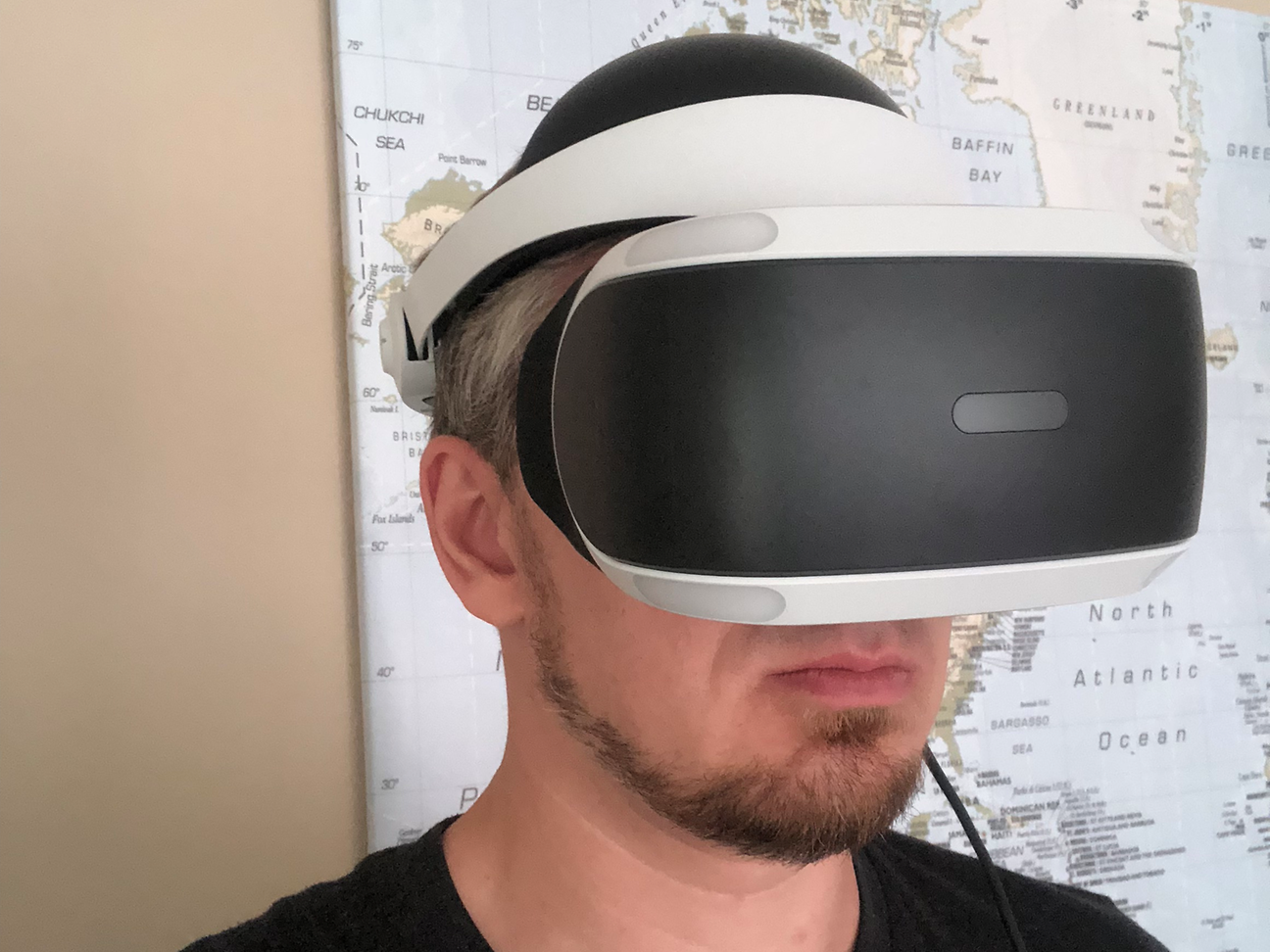

Virtual Reality: From the house of horrors in a swamp to a friendly sundeck
As a die-hard gamer since my earliest youth, nowhere else has technological progress had a more profound impact on me than in the world of computer games. It was way more than 20 years ago when I first picked up a Gameboy, with its postage stamp-sized screen that didn't even display proper colors. I’ve stacked virtual blocks on my cellphone and TV to the strains of Russian music, I’ve spent whole nights rolling through a (colorful – yay!) landscape as a hedgehog, and I’ve sat at a PC monitor with a joystick and keyboard playing FIFA with friends.
Back then, there weren’t any online games and there was no virtual reality, either – at least not for the masses. Sure, I’ve got hazy memories at the back of my head of people wearing heavy suits in huge warehouses and the like, but both the exorbitant costs of that gear and the idea of setting it all up in the living room at home are about a million miles away from the technology we have at our fingertips today. And I’m not even going to get started on the graphics back then.
So, how have things changed? Well, now I can bring VR right into my home – either with one of the many headsets you can slot your smartphone into or, if you’re a gamer like me, with an add-on system for your PlayStation. Needless to say, I opted for the latter.
Into the swamp – diving into virtual reality
My first excursion into a virtual world was courtesy of Resident Evil 7 (I’m a tough cookie). The game isn’t all that much fun in the non-VR version, but actually creeping through a house of horrors in a swamp – rather than being a kind of detached observer – is the most nerve-shredding experience of this type I’ve ever had. Once I’d had my hand cut off by a chainsaw, among other things – a pretty stunning experience when it happens right in front of your eyes, by the way – I quickly knew exactly what I was made of. It’s really difficult to last out that level of intensity for any longer than 30 minutes at a time.
But, hey, there is less bloodthirsty stuff out there, too. You can be lowered into the ocean in a shark cage, explore a strange planet populated by dinosaurs (also very cool), or career through fun and colorful worlds in the finest jump ‘n’ run tradition as a small robot. Whether you opt for PlayStation or the less costly VR headsets from Samsung and the like, the list of possibilities is long.
The feeling when you’re actually sitting or standing still somewhere and then a virtual world starts moving under your feet really sticks in your mind. It’s a genuine wow-effect. Or at least that’s been the experience of everyone I’ve forced to try out virtual reality (preferably in the house of horrors).
These applications and games are fundamentally designed for one person wearing a headset, perhaps with a few people watching. The next step is pretty obvious – having several people in one virtual space at the same time. This is known as social VR.
Digital sundeck – the Magenta VR Lounge as a virtual meeting point
Technological advances, the internet and related devices are all making our world a smaller place. These days, it’s easy to pull out my smartphone and video-call someone, and it makes no difference at all where they are. This is where social VR comes in, seizes on something we’re already used to and takes it to a whole new level. To see it in action, you can visit the Magenta VR Lounge that Deutsche Telekom is showcasing at the IFA trade show in Berlin. Up to three people can meet up on a virtual roof terrace in the Lounge, where they can watch content from the Magenta VR app together and talk to each other directly, using their own voices.
This kind of solution could help friends in different parts of the world come together around a virtual campfire to talk to their heart’s content. Couples separated by long distances can watch a film together or just feel close to each other. Parents with children who have traveled abroad can stay in touch with their offspring in a way that goes far beyond a plain old voice call. There are implications for the world of work, too. Imagine virtual conferences that span multiple countries and include presentations on a virtual screen. All these things are already possible and, sooner or later, are going to become part and parcel of our everyday lives. The next logical step will be to bring touch and physical sensations into the equation. Immediately, my mind turns to gaming again. Speeding around the track in a virtual racing car, feeling the vibrations from the road and perhaps even the wind in your face – now that would be phenomenal!
